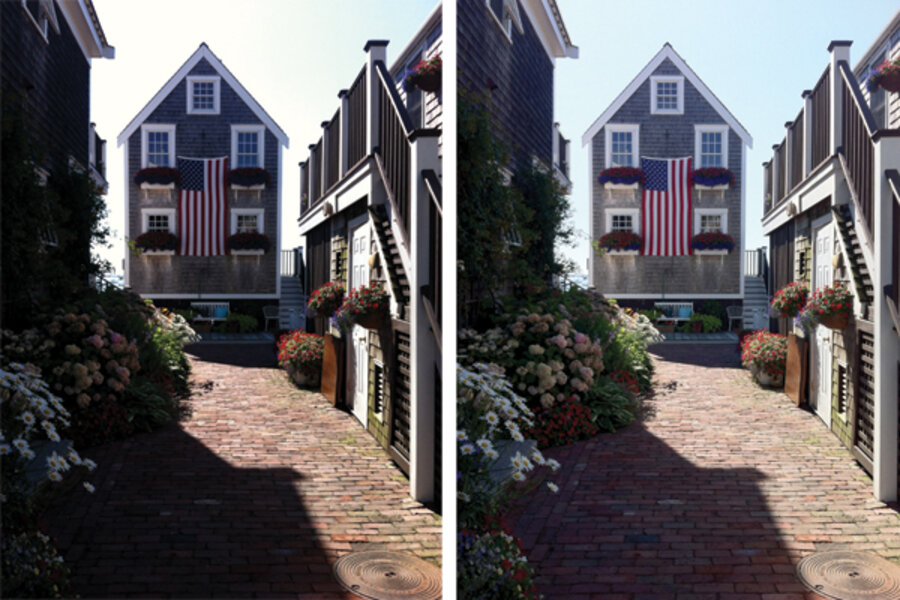How HDR helps your iPhone or Android camera 'go pro'
Loading...
Over the past year, the photo-sharing network Flickr marked a massive shift in how people take pictures. Digital photographs come with a snippet of code that identifies what kind of camera took each shot. Flickr tracks this information across its 75 million users, showing the rise and fall of popular cameras. Last year, the site revealed that the most popular camera isn't a camera at all. It's a phone.
The Apple iPhone 4 has held the top slot for more than a year, with the newer iPhone 4S recently pulling ahead. The high-end Canon EOS 5D Mark II (a real camera) holds a distant third.
Smart-phone cameras have greatly improved year over year, introducing higher megapixel counts, better lenses, and an often-misunderstood feature called "high dynamic range" or HDR.
What is HDR?
This camera setting tries to tackle one of the weaknesses in phone photography. Few phones offer exposure settings. This leads to problems when dealing with harsh light and heavy shadow.
Take a look at the images above. The left photo was taken without HDR. The brick walkway looks great, but the camera lost a lot of detail in the bright and dark areas. The sky looks washed out. The flowers seem lost in shadow.
A professional could repair this image with editing. But HDR tries to fix the image as it's being taken.
With HDR on, a phone will snap three photos in rapid succession. Each image uses a different exposure level. One shot is tuned for dark areas, such as the flowers in the image above. One captures the bright spots, such as the sky. The third goes for the mid-tones, much like the non-HDR photo.
After it snaps all three photos, the phone tries to identify the best aspects of each shot and stitch them into a single image.
While the final product is rarely perfect, it's often much better than the original – with no extra work required. If you're unhappy with the results, the iPhone actually saves two images: the HDR version and the shot it would have taken without the feature.
HDR is not ubiquitous across phones. It's a much-touted feature in the iPhone 4, 4S, and several Android phones from HTC, such as the One X, Rezound, and Amaze.
With iPhones, turn on HDR from the phone's standard camera application by clicking "Options" then sliding the HDR toggle. With HTC phones, open the camera app, find the "Scene" menu, and choose HDR.
If your phone does not have the setting, the $2 Pro HDR app will add the feature to Android devices and give both kinds of phones more powerful HDR options.
HDR doesn't work in every situation. In some cases, it can actually make things worse. Here are some pointers if you're just starting out.
•Don't use it for action shots or scenes from a moving vehicle. Because HDR takes multiple images, the subject may have moved between the first and final snapshots. This can lead to a ghostlike effect once the phone stitches the images together.
•Don't use it for high-contrast images or ones with vivid colors. HDR evens out everything. It wants to make bad spots look good, but it can also make great spots look only OK.
•Don't use it with a flash. It messes up the exposures. The iPhone automatically turns off HDR before using the flash.
•Do use it for landscapes, especially ones with distinct foregrounds and backgrounds. Each focal plane could require a completely different exposure level, which HDR helps mitigate.
•Do use it for outdoor portraits. Compensating for harsh sunlight can ruin images in two ways: the background can get washed out or the general exposure level can get lowered, leaving your subject in the dark. HDR should correct for either of these problems.
For more on how technology intersects daily life, follow Chris on Twitter @venturenaut.
[Editor's note: This is an updated version of an article that appeared in the August 13 issue of the Monitor weekly magazine.]







